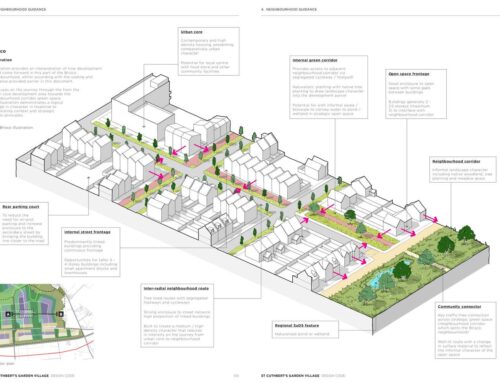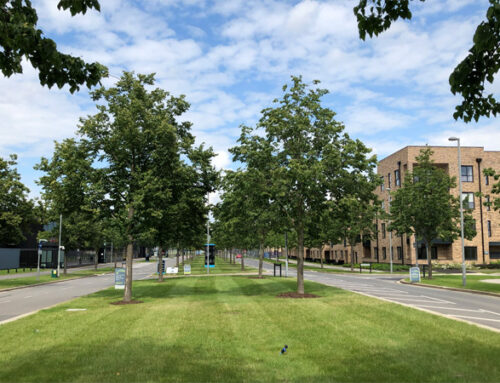This week marks the closing date on the consultation on the Government proposals for reforms to plan making in England (at midnight on 18th October). If implemented as described, the proposed reforms would be a significant change to not only how Local Plans are produced but also their content and scope.
As many out there have probably just finalised and submitted your consultation responses, we thought we would share some of our thoughts on the proposals, albeit focusing on a just a few key areas that are closest to our work here at Hyas, rather than every aspect of what is a fairly wide-ranging set of proposals.
Overall, the aspirations for greater clarity, quicker production and addressing key local issues should be something we would all be supporting. However, like many across the sector it seems, we are not convinced that the proposed reforms as currently drafted will lead to these positive changes and run the risk of being too short sighted, especially on strategic and larger than local issues. Indeed, even if the consultation process leads to significantly refined proposals in some key areas, there remains a not so small elephant in the corner of the room in the form of skills and resourcing challenges. This is particularly so in the public sector and it’s not just in planning but also in those other technical disciplines that planners rely on to help develop plans – transport planners, ecologists, school place planning, demographers, heritage officers etc.
Our focus in the remainder of this piece will be on how some of the proposed reforms address (or don’t) strategic or ‘larger than local’ planning issues and the ambitions to speed up plan making through revised processes.
Strategic Issues
A core thread and purpose of the proposed reforms is to ensure that plans show what is important locally and improve the speed of their production. Whilst laudable in their own rights, we are concerned that these could lead to short term planning rather than taking a longer-term approach and doesn’t recognise the very real and important link for plan making between local and strategic matters.
It is the case that many administrative areas with the responsibility for preparing Local Plans increasingly do not reflect the functional geography of how their populations live, work, socialise and interact with their environments. Because of this, resolving key strategic issues and opportunities will often dictate and be a means to address those important local ones. Accordingly, it is highly likely that a good vision for a local area will need to take full account of wider geographies and the larger than local strategic matters which cross local authority boundaries. Good local placemaking and planning will almost always need some strategic thinking on transport, flooding, climate change to name but three. The seeming absence of recognition of this is a core concern with the current reforms.
Replacing the ‘duty to cooperate’ with the new ‘alignment test’ may be a way in which the new system could address this, but it remains to be seen whether alignment (much like cooperation) has the requisite influence to resolve significant cross boundary matters and especially where there is an expectation of swift progress.
For some places, the most appropriate way to address local issues and opportunities will be large scale urban extensions or new settlements. This represents an approach to planning with a level of long-term ambition and vision that seeks to reap the rewards of large-scale growth for their areas. However, it also takes a significant amount of work and resources to develop, promote, co-ordinate and enable such schemes, often with cross boundary connotations. We worry, therefore, that the collective effects of the proposed reforms will mean that in some places we will see such longer-term responses to local ambitions now being forced into the “too hard to do” box. This might secure faster plan production, but the opportunity costs for some places and their existing and future residents could be far greater.
Processes and Project Management
Part of the answer to the above issues may actually be found in some other, more procedural elements of the proposed reforms. Notwithstanding that the proposed 30-month plan preparation timetable will likely face significant challenge, we think the principle of seeking better/more visible project management to support improved plan delivery is a good one.
Most Councils will already be using project plans and programmes for workstreams and evidence base production. Formalising and critiquing it as part the process could help to give the Local Plan more corporate visibility (if it hasn’t got it already) and, hopefully, a lever to secure proper resourcing, especially if timeframes are condensed and workloads intensify. In providing project management support to Councils, we always advise them at the outset to think holistically about the work and resources that are required across the organisation (and beyond). It also makes sense, in two tier areas, that County Councils adopt a similar approach to how they will help to resource the production of local plans across their area. This is also a good opportunity to think creatively about resourcing. The work we undertook for PAS on behalf of DHLUC recently on PPAs highlighted a small number of Councils using PPAs to undertake site specific evidence gathering.
The proposed gateway assessments with external critique and support are also, to a degree, formalisation of existing good practice (currently involving PINs). The suggested 3 gateways do raise concerns about the impact they will have on the very tight timetables proposed as well as how the work will be resourced – both by local authorities and also those tasked with conducting the gateway reviews. DHLUC officials attending the events run by PAS over September suggested these gateways might not be statutory, but clearly an Authority not going through them would need to have good reasons why. This would suggest a degree of discretion and flexibility with the gateways to enable them to best respond to the needs and circumstances of each Council. Flexibility for Councils to decide how many and who undertakes/is involved in the assessment(s) – particularly the early advisory gateways – is likely to increase the actual implementation levels, particularly if take up of good practice is incentivised through additional resourcing support.
Hyas is always an advocate of employing good, proportionate project management with the additional clarity, certainty and efficiency that normally follows. Capturing the proposed approach clearly in a document or report (the Project Initiation Document described in the consultation) is supported but it will be crucial to directly address that elephant in the corner at this stage by including a clear plan for resources alongside the plans for engagement, evidence and production.
As noted, the above considers quite a narrow section of the proposed reforms. It will be interesting to see what the sector thinks about these elements through the consultation and other commentary as well as the broad range of other proposals. Also close to our hearts here at Hyas is the potential read across to implications on related matters of design and coding (see our previous specific think pieces on those aspects of current and emerging practice as well), particularly through the proposed new Supplementary Plans as well as the role of technology and digitisation in speeding and simplifying the process whilst also re-enfranchising people in the discussion over the future of their places.
Paul Brockway, Director




